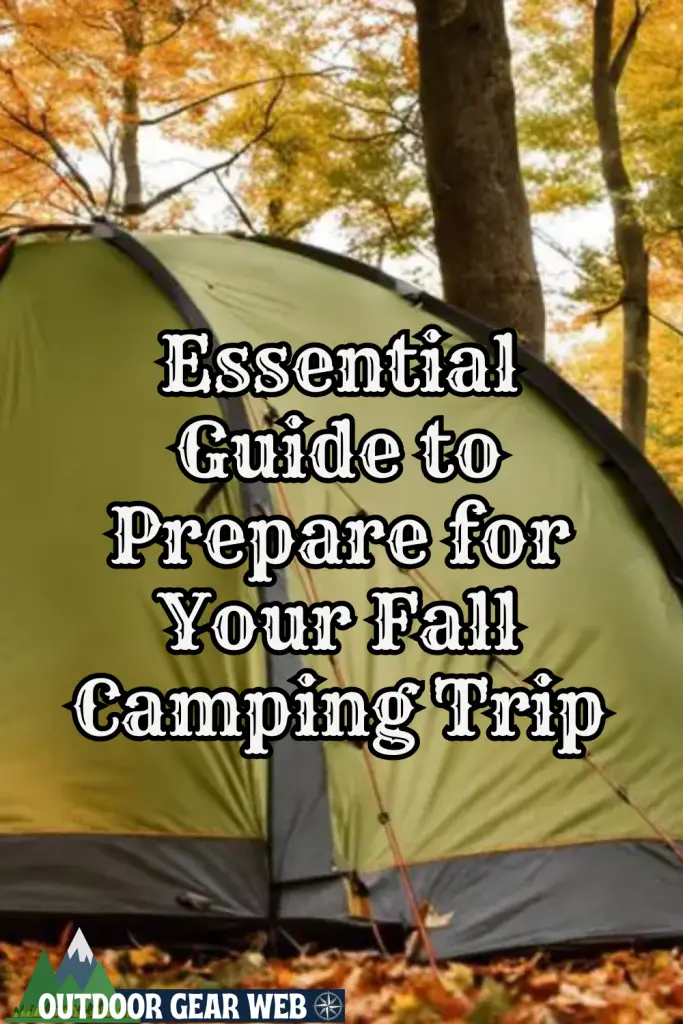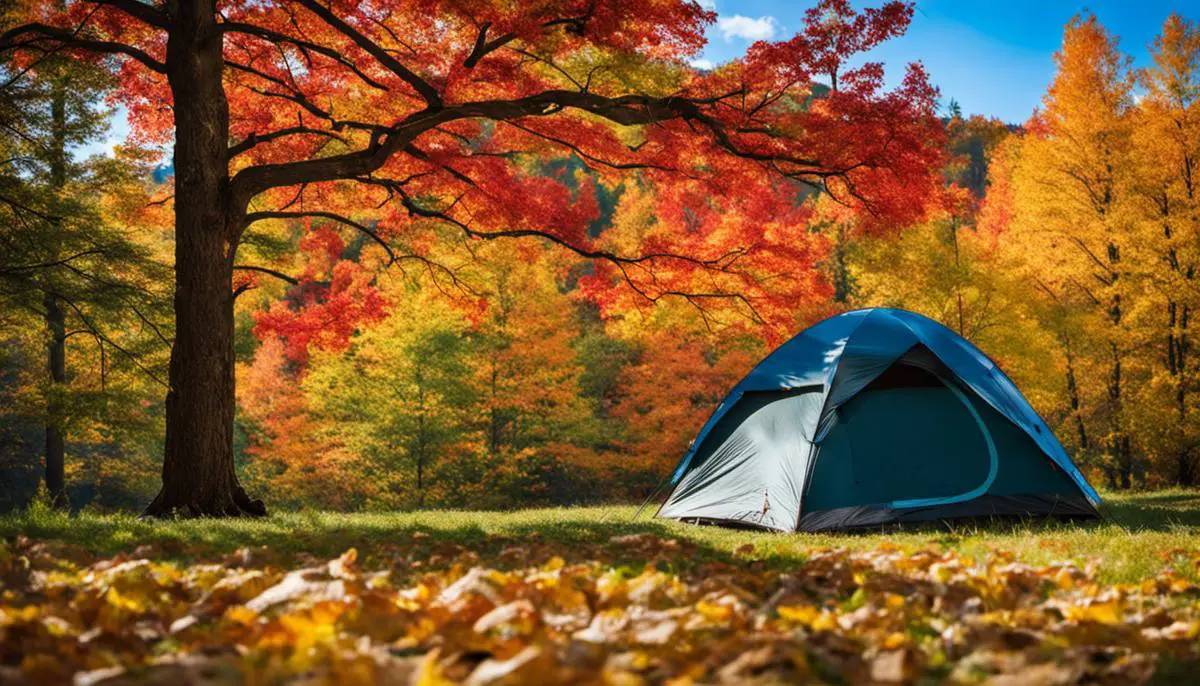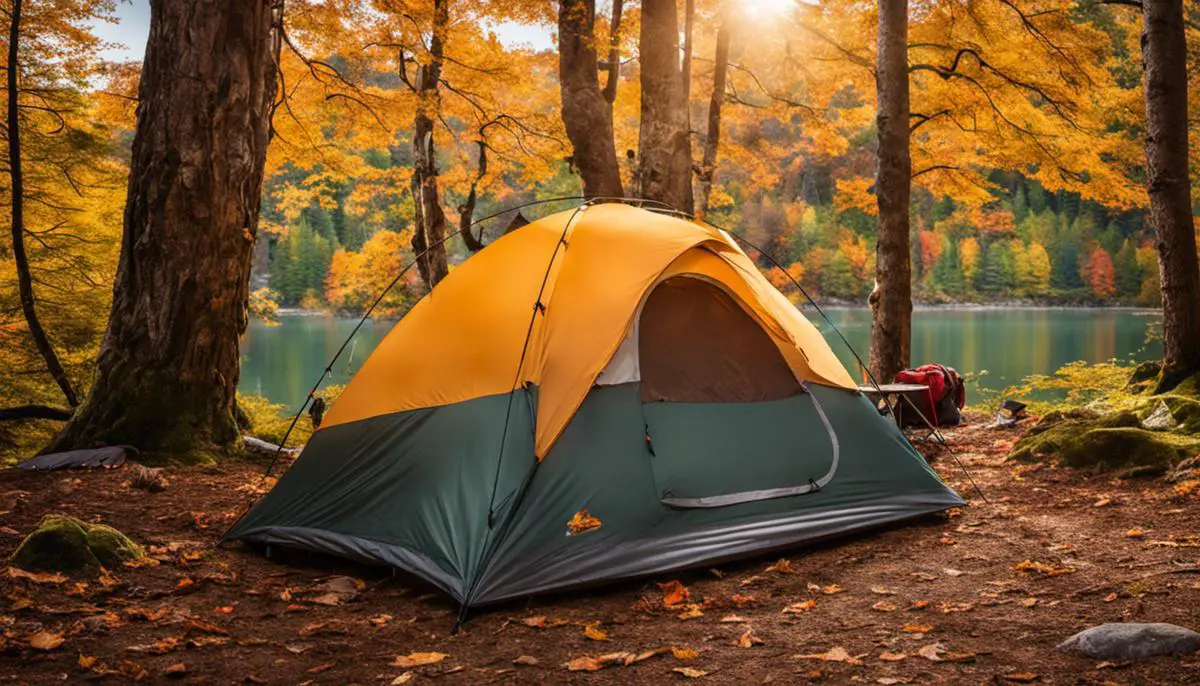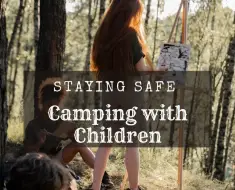
As summer fades into a haze of reds, oranges, and yellows, the adrenaline and spirit of adventure pull many of us to the great outdoors to savor the unique allure of fall camping. The crisp air and autumn colors stir a special kind of joy in nature enthusiasts. However, the pleasure of camping in the fall doesn’t come without its set of challenges. Acknowledging these changes and preparing adequately will guarantee an enjoyable and safe adventure. A good grasp of fall weather and potential conditions, packing the right gear, and understanding fall camping safety basics are vital steps toward a successful camping trip. That is why this essential guide to prepare for your fall camping is so critical.
Check out these fall essentials to have when you go camping.
Understanding Fall Weather and Possible Conditions
Understanding Fall Weather and Possible Conditions
When planning to camp during the fall season, the first step is to understand fall weather and the potential conditions you might face. Autumn weather is highly variable, depending on your location. Northern areas may face frigid conditions, while southern regions might only experience mild coolness. Low temperatures can lead to frost or freezing conditions at night. Fall is also a wet season in many regions, and there is always a probability of rain. Before your camping trip, check local weather forecasts to get a clear idea.

Staying Warm in Low Temperatures
In response to the potential cold conditions of fall camping, your gear needs to be chosen wisely. Opt for a sleeping bag that is rated for the lowest possible temperature you might encounter. A sleeping pad is also a useful tool to keep you off the cold ground. Thermals, warm socks, gloves, and a good quality jacket should be an essential part of your packing to battle against chill. Consider packing thermal layers, as layering clothing can help to trap warmth and allow you to adjust to varying temperatures throughout the day.
Here are our Top 5 cold weather sleeping bags.
Staying Dry in Wet Conditions
The likelihood of precipitation means that your gear should also protect you from getting wet. Look for a waterproof or at least water-resistant tent to provide shelter. Tarps can also be used for extra protection above or below your tent. Waterproof clothing, including boots, jackets, and pants, can keep you dry during activities outside of your tent. Pack extra clothes to replace any that might get wet from rain or dew.
Researching Weather Forecasts and Changes in Climate
Regularly check the weather forecast for your camping area in the days leading up to your trip. Pay attention to any predicted rain or temperature dips, as well as the potential for severe weather events. Apps and websites like The Weather Channel or NOAA can provide detailed forecasts, helping you plan your packing and itinerary around the weather.
Recognizing Signs of Changing Weather Conditions
When you’re out in the wilderness, it’s also useful to be able to recognize the signs of changing weather conditions. Rapid drops in temperature, changing winds, or darkening clouds can all signal an incoming storm. Learning to interpret the sky and weather patterns can provide useful alerts for when you need to seek shelter in your tent or potentially cut your trip short for safety.
In conclusion, camping in the fall requires understanding and preparing for fluctuating weather conditions. Proper gear and a keen eye on the forecast and natural signs will ensure a safe and comfortable trip. Remember these essential guide tips to prepare for your fall camping.
Are you looking to take your family out? Find a family campground near you the right way.
Choosing and Packing the Right Gear
Choosing the Right Gear For Fall Camping
When preparing for a fall camping trip, the very first thing you should consider is the right type of camping gear. For fall, temperatures can get quite chilly, especially overnight, so it’s imperative to have equipment designed to keep you warm and dry. A reliable, all-weather tent is a must. It should be waterproof to protect from fall rain showers, and engineered for heat retention to withstand the chilly nights. Some tents come with a ‘footprint’, which is a special layer that can be installed under the tent for added warmth and protection from the cold ground.
As mentioned above, sleeping bags for fall camping should be chosen with the temperature rating in mind. Look for a sleeping bag that is rated 10 to 20 degrees cooler than the temperatures you’re likely to encounter. This can help ensure that the cold air won’t seep through the sleeping bag and keep you uncomfortably chilled during the night. And don’t forget a sleeping pad or air mattress to provide a barrier against the cold ground.

Packing the Right Clothes
Clothing for fall camping should be aimed at keeping you warm and dry. Always plan for layers – a base layer to wick moisture, a middle layer for insulation, and an outer layer to protect from wind and rain. Remember, it’s better to over-pack clothing than under-pack — you can always shed extra layers if you get too warm. Pack a waterproof jacket and pants for those sudden fall showers or morning dew. Warm socks, hats, and gloves are also essential for overnight camping when temperatures can drop significantly.
Maximizing Space and Keeping Gear Dry
Efficient packing techniques can help you maximize space and keep your gear dry throughout the trip. A good rule of thumb for packing your backpack is to put lightweight, less-frequently used items at the bottom, and heavier items towards the top and close to your back. Use waterproof bags or containers for crucial items such as matches, electronics, and clothing to protect them from getting wet. For additional efficiency, consider using a higher-capacity backpack with multiple compartments. You can invest in compression sacks to compact bulky items like sleeping bags and clothing.
Remember, your goal in packing is to create a compact, well-organized pack that contains all essential items for a comfortable fall camping experience, while efficiently utilizing the space and keeping your gear dry and safe.
Learn the right clothing to pack for your fall trip here in more detail.
Fall Camping Safety Basics
Understanding Fall Camping Safety Basics
Fall camping can be a wonderful experience, especially with the shift in weather and the changing colors of nature. However, it requires thorough preparation, as the season poses distinct challenges, risks, and safety concerns. Understanding these can help ensure an enjoyable and secure camping trip.
Identifying and Preparing for Environmental Risks
First and foremost, recognize potential risks related to the fall season. Temperatures, even in the daytime, are getting noticeably cooler, leading to an increased risk of hypothermia. Layer your clothing to maintain warmth, and pack insulated sleeping bags and sufficient firewood. Don’t forget waterproof clothing since fall can be a wet season in many areas.
Preventing Hypothermia
Hypothermia is a potential hazard during fall camping. This occurs when your body loses heat faster than it can produce, dropping to dangerously low temperatures. To combat hypothermia, stay hydrated and maintain adequate nutrition. Wear synthetic or wool clothing instead of cotton, as these materials provide better insulation. Most importantly, stay dry, as moisture increases heat loss.
Interacting with Wildlife Safely
As wildlife shift their behaviors in preparation for harsher winter conditions, remember some species may be more active or aggressive in the fall. Research the local wildlife and their fall behavior before your trip. Pack food carefully in bear-resistant containers, store food and trash far from your campsite, and maintain a safe distance from wildlife.
Safe Hiking in the Fall
The beauty of fall foliage is hard to resist, but the fallen leaves create unpredictably slippery terrain, increasing the risk of slips and falls. Invest in sturdy, waterproof hiking boots with good traction to help navigate wet trails. Always hike with a partner when possible, or inform others of your hiking plan if you’ll be on your own. Carry hiking poles for added stability, and remember to stay on marked paths.
Preparation is Key
Understand that fall camping does bring about unique conditions that require additional preparation for safety. Make sure your gear is up to the task and that you’re prepared for rapidly changing weather conditions. Also, familiarize yourself with basic first aid skills so you’re equipped to handle any emergencies. By following these guidelines, you can explore the beauty of fall in the great outdoors while reducing risks.

Photo by chuttersnap on Unsplash
The best part of fall camping is Halloween! Learn these fun Halloween Camping ideas.
Final Thoughts on Essential Guide to Prepare for Your Fall Camping Trip
Embarking on a fall camping trip is a rich, unforgettable experience that brings us closer to nature’s heart. While the vibrant colors and autumn sceneries guarantee an incredible backdrop for your journey, the shifting weather conditions and possible challenges require careful planning. Being well-prepared with knowledge about various aspects of the weather, choosing and packing the right gear, and staying informed about safety measures significantly contribute to a positive camping experience. As you set foot outdoors and feel the crunch of leaves underfoot, let the wild solitude and tranquility of fall make every moment worthwhile. However, don’t forget the tips from this essential guide to prepare you for fall camping.
















